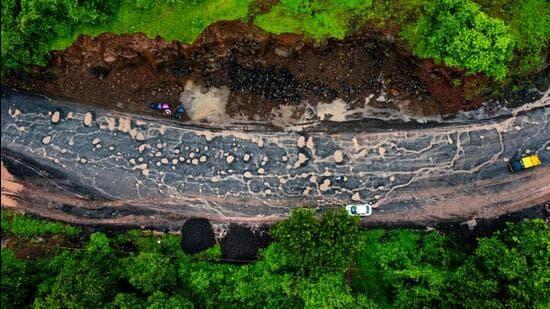The Long Road to Nowhere: Mumbai-Goa Highway Project Faces Villager Protests
Not long ago, the Mumbai-Goa Highway shone bright on Maharashtra’s development map—an ambitious promise of four-lane travel, scenic drives, and shortened commutes. But over a decade on, it tells a very different story. Villagers across the Konkan belt grapple daily with crumbling roads and stalled construction. Their patience has thinned to breaking point. On July 28, they plan to make sure their voices echo across dusty stretches and pothole-laced segments.
“The highway is ruining our businesses, putting lives at risk, and causing immense hardship during festivals and emergencies. We have run out of patience,” said Rahul Gurav, a local businessman in Ratnagiri’s Sangameshwar village. Frustration is mounting—and with good reason.
What Was Promised vs What Is
Launched in 2011, the NH-66 project—also known as the Konkan Expressway—was envisioned as a dramatic upgrade. A two-lane road would grow into a 440-km four-lane highway, linking Palaspe in Panvel near Mumbai to Zarap at the Goa border. The time to drive between Mumbai and Goa would ideally shrink from 12 to six hours. That hasn’t happened. Not even close.
Instead of a smooth corridor, travelers find broken flyovers, exposed steel rebars, and service roads overloaded with diverted traffic. Residents say they’re dodging potholes nearly 2 feet deep, navigating collapsing flyovers, and facing growing isolation from neighboring villages and markets. The impact isn’t just on wheels but on livelihoods, festivals, and lives.
Timeline of Delays and Disrepair
- 2011: Project launched with high hopes and a promise of speedy implementation.
- 2015–2018: Groundwork starts. Some segments show early progress. Others stall almost immediately.
- 2019–2022: Natural challenges like monsoons cited as reasons for delays. Local protests become frequent.
- 2023: Villagers highlight landslides, loss of access paths, and incomplete flyovers. Still, no official completion date.
- 2024: Protests planned for July 28 in Ratnagiri’s Sangameshwar region. Public sentiment boils over.
Voices from the Ground
Ask locals and their grievances pour out. One of the loudest voices is that of Chaitanya Patil, a 28-year-old activist who’s been campaigning for safe roads for over a decade.
“Every complaint leads to a temporary fix that vanishes in a couple of days. We’re not even asking for a runway—just a basic, motorable road without potholes,” says Patil.
In Ozar Khol, a recent crash between a state bus and a mini-bus left passengers injured. The road is narrow, broken, and dangerous. Amol Shetye, a trader there, said one victim is now bedridden.
“Construction work is dragging and the condition hasn’t changed in years,” he added.
Disruption at Multiple Fronts
- At Hamrapur phata, a 300-metre drive leaves passengers shaken on a surface strewn with deep potholes.
- In Dolvi, Gadab, and Pandapur, roads have caved in, with some breaking apart within months of construction.
- At Parshuram Ghat, both up and down traffic squeeze dangerously onto a single lane each monsoon.
Residents say the situation escalates every monsoon. In Pedhe village near Chiplun, landslides are a seasonal curse, spurred by poor hill-slope engineering. “The mud is destroying homes and farmland here, every year,” said Nishikant Mali, deputy sarpanch. One landslide even buried homes and choked a village well.
Loss of History and Connectivity
Perhaps one of the more quietly tragic outcomes is the loss of the pakhadi steps. These connected the hilltop Parshuram village and Pedhe for generations. With their destruction during highway expansion, cultural exchanges and daily commutes have been disrupted.
“Now, children travel 20 minutes by bus. Festivals are harder to celebrate together,” said Mali. A bridge was proposed in 2023, but construction hasn’t moved an inch, according to local leaders.
What Officials Are Saying
Yashwant Ghotkar, Project Director for the Panvel–Indapur segment under NHAI, acknowledged the challenges: “Since some flyovers are yet to be built, vehicles are being diverted onto service roads, which were not designed to handle such heavy loads. This has led to potholes.”
He added that 77 km of the 84-km stretch is technically completed but insufficient. The monsoon, he said, hampers concrete work. “We hope to make the highway pothole-free by the end of September or before the Ganpati festival,” he said, though many locals remain skeptical of that timeline.
Asked why more permanent fixes aren’t being made, Ghotkar admitted, “What we really need is full road closure to finish the work properly, but that’s not possible right now.” His words, while honest, don’t do much to reassure commuters or villagers stuck in the muck of an endless construction zone.
The July 28 Protest: A Breaking Point
For the people of Sangameshwar, this isn’t just a broken promise—it’s daily hardship. On July 28, they plan to bring that message into the public eye. The protest will involve not just angry placards, but a lineup of vendors, old women, students, and business owners who’ve had enough.
“This highway is a lifeline. And right now, that lifeline is choking us,” says Gurav.
Looking Forward, Warily
The highway project is clearly stuck at an uncomfortable crossroads. There are plans, yes. Schedules and proposals too. But on the ground, reality paints a far messier picture. Cratered roads, incomplete flyovers, and isolated villages can’t be patched with reassurances.
Perhaps what it’ll take is what’s brewing in Sangameshwar—people, quite simply, refusing to wait anymore.
Key Issues Summarized
- Delays: 13 years since launch, massive portions remain incomplete
- Poor Road Conditions: Craters, potholes, and unsafe service roads dominate
- Economic Impact: Markets losing footfall, businesses affected severely
- Lack of Safety: Ongoing accidents, especially during monsoons
- Cultural Disruption: Historical footpaths and village connectivity destroyed
Officials cite weather and traffic as obstacles. Locals say—it’s just neglect.

